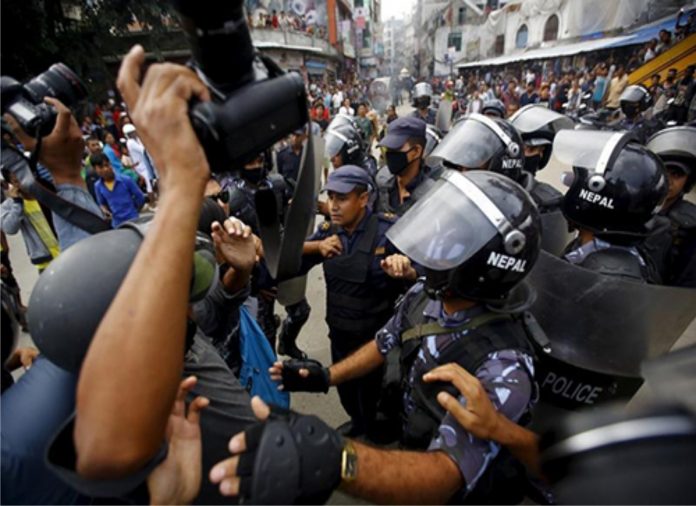Protest is another way or means for citizens of any given country to let out their grievances on social, economic and political decisions affecting their well-being. And it is the duty of journalists to make government accountable to the people. In as much as you are concern about letting the government and authorities know what the people are saying per time, you should also ensure that you are safe and able to carry out your duty successfully. On this note, there are few ways below that can help you as a journalist to protect yourself while covering a protest or any other dangerous beat as compiled by Martin Shelton and Geoffrey King of the Freedom of the Press Foundation.
Protecting your information
Before covering a protest, consider what data you’re bringing to the event, and what kinds of evidence you hope to take away. You also want to think about what would happen if any of that information left your custody. Depending on your situation, your devices might be lost, stolen, or confiscated by any number of groups — bystanders, demonstrators, authorities, and others. Ask yourself a few questions before attending the event:
- Do you have any sensitive data on your devices?
- How likely do you think it is that a third party could get access to your devices?
- Who could get access to your devices, and what might they be able to do?
- Do your web-connected devices have access to remote services, such as your email?
- Are there sensitive details that you need to obscure before publication, such as the identities of those involved? Would it be acceptable for them to be seen by someone before publication?
Sometimes protests can be relatively calm events. But sometimes protests can be chaotic. Press observers aren’t always distinguishable from the crowd; sometimes reporters even find themselves deliberately targeted by police, protesters or both. When protests become dynamic, equipment is generally more likely to be damaged, lost, stolen, or confiscated. Know the environment and the likely risks
Need to protect your communications?
Before going anywhere, make sure your colleagues know where you are, and have your contact information.
Phone calls and SMS text messages can be easily intercepted. One common way SMS messages and phone calls are intercepted is using a fake cell phonene tower, sometimes called an IMSI catcher or “Stingray.” Evidence compiled by Lucy Parsons Labs suggests IMSI catchers are being used by law enforcement officials around the globe. The good news is that it’s pretty easy to encrypt your mobile communications. Use Signal for iOS or Android to make secure phone calls and send secure text messages. If you want help getting started, read Signal for Beginners.
Keep in mind that your messages are only as secure as your phone. So if there’s no passcode, your phone can be opened with a simple swipe.
Keeping your data safe
You’ll want to make sure a record of what you saw at the event makes it out safely. Whatever form your media takes — physical film, or digital storage on a camera or smartphone — be prepared to physically secure your media.
Consider bringing a secondary mobile device
We all love to bring our mobile devices everywhere. But before bringing it to a protest, think carefully about what data is on your phone, and what might happen if it leaves your possession. Does it contain a great deal of sensitive or private information? Would losing access cause you significant problems? If so, consider bringing an alternative device instead.
Contract-free phones are fairly easy to find at corner stores and electronics shops (e.g., Best Buy) and can typically be activated immediately after purchase. These devices are not nearly as secure as an up-to-date iPhone, for example, and encryption may not be on by default. On this secondary device, avoid logging into accounts with access to your personal data. If you plan on uploading video recordings on your mobile device, make sure to purchase a large data plan. Remember that your colleagues may not know about your secondary phone; make sure you’ve exchanged numbers. You can put their numbers in your phone, but in case you lose access, write it down somewhere else as well.
If you need to bring your personal device, there are smart ways to do that.
Before covering an event, back up your mobile devices locally
If you’re going to bring your mobile device to the event, make a local backup of your data in case you lose access to your device. iPhones can make local backups using iTunes. Learn how to back up files on your Android device.
Go get the story
For reporters covering protests, legal, physical, and digital safety are all very real concerns. There’s no replacement for knowing the environment and likely concerns in advance, then coming prepared. Learn more about common risks for protesters. They are putting themselves on the line to call attention to issues of political importance. Do them justice. Stay safe, and get the story.

















